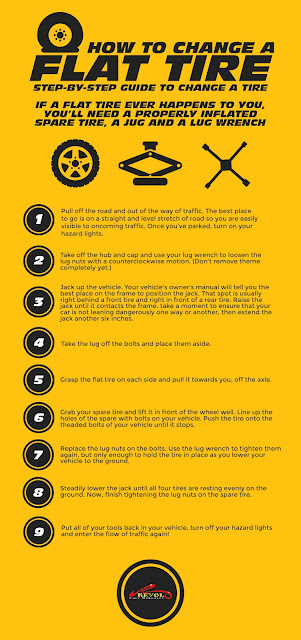Having a stuck wheel on your car can be really frustrating, especially when you got a flat tire by the side of the road. Here are a few tips on how to remove a stuck wheel easily
You have a flat tire, and you jack up the wheel, but it refuses to come off. What could have happened?
Changing a wheel should not be this hard, but a wheel can get stuck due to rust accumulation. This corrosion appears in the area between the wheel and the hub.
This makes it hard to remove the wheel because it feels permanently welded to the hub.
If you are changing the wheel alone and there is no one to give you that necessary muscle, consider some of the following tire removal tips.
Table of Contents
1
If you leave your car in an area exposed to snow and road salt, then these elements can get into your aluminum alloy rims and into the hub, where they cause corrosion. These corrosive elements tightly glue your wheel to the hub, making it almost impossible to replace a worn-out tire.
It is not only aluminum wheels with this problem but also steel wheels, which can happen in any climate conditions after some time.
We recommend purchasing some synthetic grease to apply to the wheel hub and rim to prevent this problem from happening. Do this the moment you purchase a new car or during the first wheel replacement.
So let’s find out the best methods of removing a stuck wheel.
RELATED: What is Cross-Threading a Wheel Nut/Stud?
Here are a few tips from me which I’m usually using myself to remove stuck wheels. Remember always to use safety equipment and get help from a professional mechanic if you are not sure about how to do it. Follow these steps to remove a stuck wheel:
Total Time: 10 minutes
If you are near a service station or a garage, you can use this simple trick to remove a wheel stuck on your car. Loosen the wheel nuts but do not remove them altogether. Lower the car and drive a few feet forward and backward. Repeat this process on level ground. Jack up the car and remove the nuts.
Loosen the wheel nuts but do not remove them altogether. Lower the car and drive a few feet forward and backward. Repeat this process on level ground. Jack up the car and remove the nuts.
The wheel should have loosened, and you should now be able to remove it. Ensure that when driving the car, that the nuts are not so loose that they fall off and drive super slowly, not to risk any accidents.
If you have aluminum alloys or steel wheels, then the likelihood of rust/corrosion developing on the hub is high. You can use a rust removal lubricant to loosen the wheel. In the procedure, first, remove the wheel cap and spray the wheel studs. You can use lubricants like PB Blazer or Liquid Wrench.
After spraying the studs, do the same in the area where the wheel intersects with the central hub. Give the spray around 15 minutes, and then try to get the wheel loose again by giving it a slight punch or kick.
After jacking up the car, remove all wheel bolts or nuts except one. Use your foot to hit the tire while it is off the ground. Check that your car is standing on the jack stands safely. Rotate the wheel and hit it with a kick again. With continuous effort, the wheel should separate from the hub, and you can then comfortably remove it after unscrewing the last bolt.
Use your foot to hit the tire while it is off the ground. Check that your car is standing on the jack stands safely. Rotate the wheel and hit it with a kick again. With continuous effort, the wheel should separate from the hub, and you can then comfortably remove it after unscrewing the last bolt.
This method of removing a wheel stuck on the car is better than using a hammer to hit the stuck wheel. The force from a hammer will destroy the wheel rim and bolts. Once you have removed your tire, use some sandpaper to remove any rust on the hub. The next time you re-install the wheel, apply some anti-seize.
While this technique is not safe, you can try it out when you have run out of options with a wheel stuck on the car. The first stage is to jack up the car. Before proceeding, ensure that the car is secure on the jack stands. Find lumber measuring 2X4 inches and place it in the space between wheel and tire.
Identify a heavy-duty hammer and then get under the car.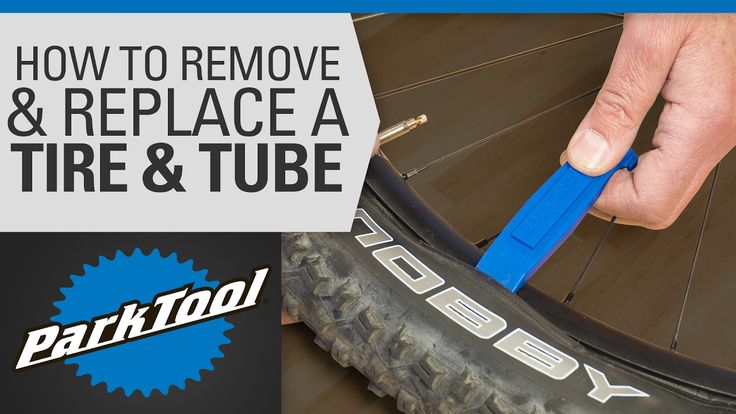 Place the lumber across the wheel and tire and use your hammer to hit the lumber. This will free up the wheel and enable you to remove it from the hub carefully. You need to note this method can be dangerous because you are under the car. If your jack stands fail, the car will collapse on you, causing instant death. You also need to be beefy to operate the hammer.
Place the lumber across the wheel and tire and use your hammer to hit the lumber. This will free up the wheel and enable you to remove it from the hub carefully. You need to note this method can be dangerous because you are under the car. If your jack stands fail, the car will collapse on you, causing instant death. You also need to be beefy to operate the hammer.
This is the method I’m using myself and has solved this problem thousands of times. Spray some lubricant around the wheel hub and bolts if possible. Then place some protection on the rim at the point where you put the crowbar.
Get a long crowbar and put it between the rim and wheel spindle or control arm, depending on where you can find a good location. Check the image above.
You need to be a little bit careful with this technique, though it may damage the rim. However, it is a super-effective method that works every time.
If you have tried all the techniques mentioned above and your wheel is still stuck, you may be forced to take it to a tire service station.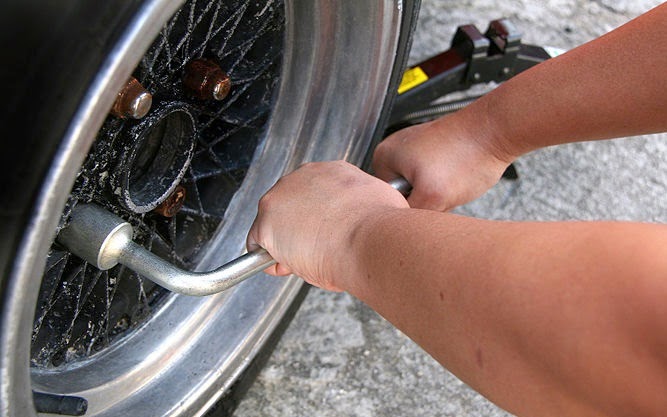 This is better than hitting the wheel with a hammer and destroying your bolts, hub, and rims. Just be honest and tell them that the wheel is stuck before giving you a price for the job.
This is better than hitting the wheel with a hammer and destroying your bolts, hub, and rims. Just be honest and tell them that the wheel is stuck before giving you a price for the job.
Having a wheel stuck on the tire is not a pleasant affair – especially when you are in a hurry. The main cause of a wheel stuck on the tire is when corrosion forms in the area between the rim and hub. This corrosive element acts like strong glue and can cause problems removing the wheel from the hub. There have been various solutions proposed to remove the tire, each with its set of pros and cons.
The easiest technique to remove a stuck tire is to find a lubricant and spray it into the spaces in the rim against the hub. This lubricant is effective in dissolving the rust formed.
This lubricant is effective in dissolving the rust formed.
You can also jack up the car and leave one bolt on the wheel. Use your leg to hit the wheel until it comes loose. Some people use a heavy hammer or torch to dislodge a stuck tire, but this can cause damage to the rims. It also requires some muscle.
Learn more:
Categories: Tires, Guides
1A Auto Team 1A Auto Blog Home
If the tire won’t come off after the lug nuts have been removed, there are a few steps you can take to get the wheel off. This post and video reviews how to remove a stuck tire yourself with a few simple tools and how to keep this problem from reoccurring.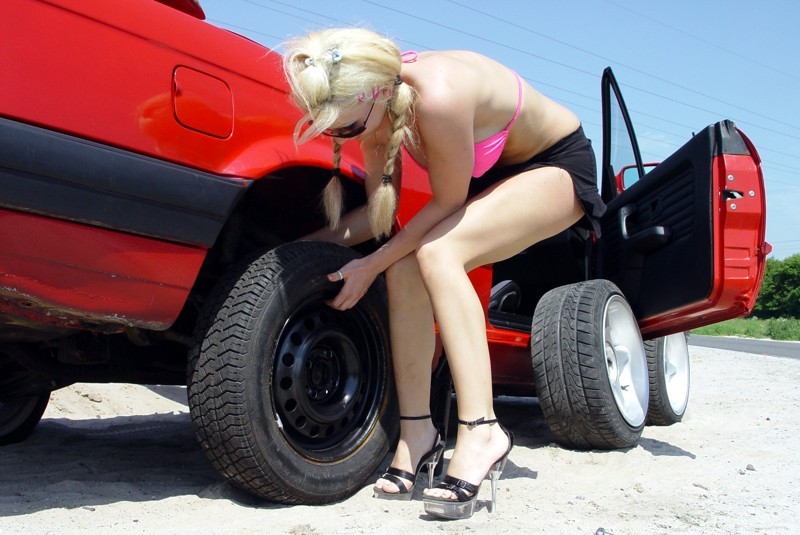
In these examples the tire has an aluminum rim and corrosion is sealing the wheel to the brake disc.
4 Different Methods to Remove a Stuck Tire
With the vehicle well supported, tighten one lug nut and pull the tire off. The lug nut may prevent the tire from pulling off unexpectedly.
See this in the video above at 0:24.
If the above method does not work and the tire is still stuck, tighten the lug nuts on loosely by hand and lower the car to the ground. Lowering the vehicle and putting weight back on the wheel might pop it loose.
See this in the video above at 0:39.
At this point, if the tire doesn’t loosen, shake the vehicle from side-to-side.
See this in the video above at 0:59.
If the above methods don’t work, place a long pry bar to the back of the rim and try to jostle it free without hitting any brake lines or other parts.
See this in the video above at 1:26.
Once the wheel moves and breaks free, remove the remaining lug nuts and remove the wheel.
To prevent a tire from sticking, apply a dab of anti-seize compound and lightly coat the back of the rim.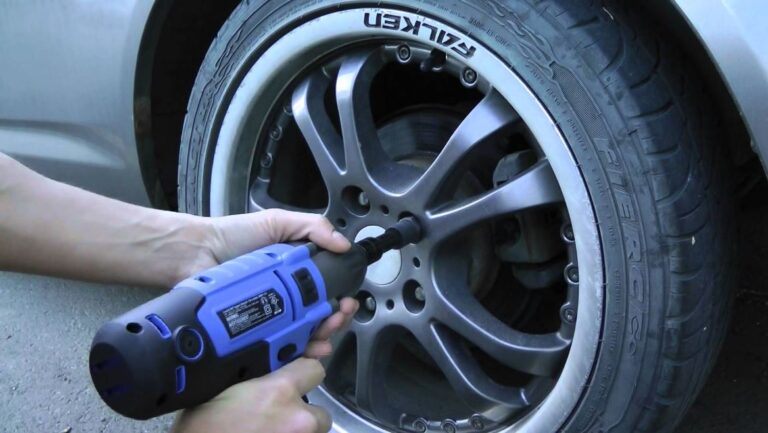 Spread and remove the compound with a paper towel.
Spread and remove the compound with a paper towel.
If you do not have anti-seize compound, dip a paper towl into the motor oil and apply a thin coat to the back of the rim with the paper towel. Don’t apply too much so motor oil doesn’t leak onto the brakes.
Once the back of the wheel is coated, put the wheel in place.
Summary
Getting stuck in the snow, even on a flat road, is a simple matter, and getting out is a whole science about which we will tell in more detail.
You can imperceptibly get bogged down in the sand - the reason is the same. The car easily falls into the snow mass due to the small area of \u200b\u200bcontact of each wheel with the surface. One square centimeter "passes" hundreds of kilograms through itself. The weight of the car pushes it into deep snow through these four points. If there is no solid support, the car will get stuck. Therefore, tracked vehicles, which are usually heavier than any passenger car, are so passable. In them, multi-ton weight is evenly distributed over a large track canvas. Crossovers have wider wheels, a larger contact patch, but because of their mass, it is also difficult for them to get out of a snowdrift. Sometimes a difficult section helps to overcome high speed, but there is a chance to fly into a snowdrift and dig even deeper.
What kind of snow do they get stuck in most often? Such statistics do not exist, but usually cars get trapped in the snow on a hillock, unsuccessfully trying to climb it, or dig a hole for themselves in deep loose snow, under which ice can hide. Old-timers say that it's too early to say "stuck" until the snow reaches the bottom. The time to think about your salvation comes at the moment when the car completely stops moving and “sits down”.
Old-timers say that it's too early to say "stuck" until the snow reaches the bottom. The time to think about your salvation comes at the moment when the car completely stops moving and “sits down”.
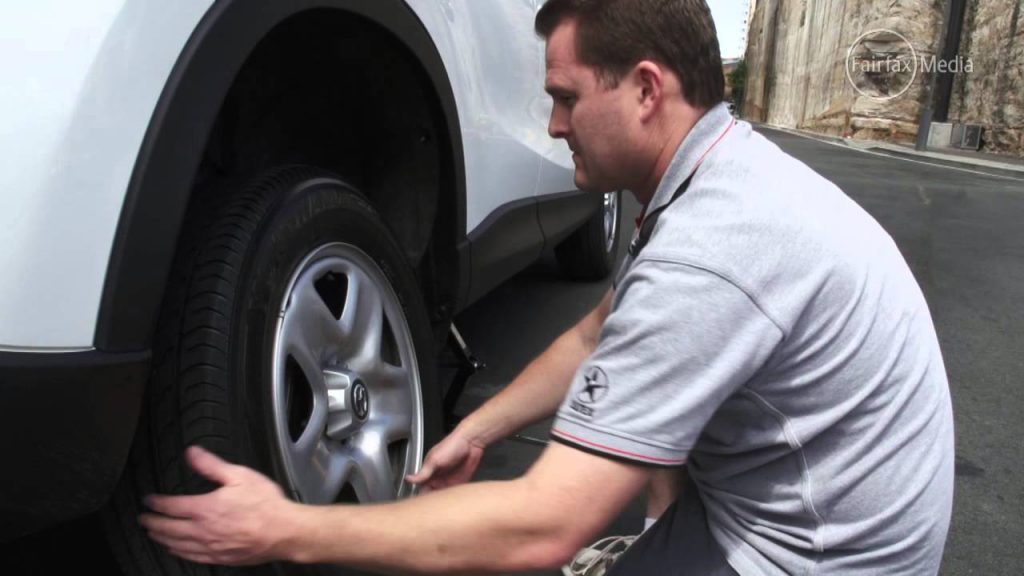


The difference between a dynamic sling and a cable is its ability to stretch. In the process of tension, the sling stretches and gains energy, which helps the stuck car to move out of the snowdrift. At the same time, it is important to stop the “tug” in time. If it’s too early, there won’t be enough tension energy, and if you miss the moment, the puller will begin to drag back to the stuck one. It is necessary to press the brake at the moment of maximum stretching of the cable, which would transfer the power of compression energy to the “captive”. By the way, such a cable is often called “jerk” because it is pulled out with pauses for squeezing and unclenching, but it is more careful about the eyes of the machines, gradually increasing the traction force.
In the process of tension, the cable gains energy, as the line is pulled, the energy becomes more and more, and at the moment of maximum stretching, the stuck car is already loaded with the line enough so that the sharp load is enough for it to start moving. It also happens that the towing vehicle has already stopped, having chosen the entire stretch of the cable or stalled, and the stuck one has just started moving and, using the released energy of the sling, drove onto a hard one. At the same time, the elastic of the cable minimizes jerky loads, which has a positive effect on the life of the towing eyes and frame and body elements, and, as a result, on the nervous system.
It also happens that the towing vehicle has already stopped, having chosen the entire stretch of the cable or stalled, and the stuck one has just started moving and, using the released energy of the sling, drove onto a hard one. At the same time, the elastic of the cable minimizes jerky loads, which has a positive effect on the life of the towing eyes and frame and body elements, and, as a result, on the nervous system.
Many motorists do not know that tires should be installed according to the manufacturer's instructions, and not as the master wanted. A symmetrical pattern should be worn in the direction of the arrow and the inscription "Rotation" indicating the movement of the machine forward. On wheels with an asymmetric pattern on the sides, there are tips: "OUTSIDE" and "INSIDE". The first inscription means the outer side of the wheel, and the second - the inner, hidden from view. This is how tires should be turned. If the tires are set incorrectly, there is more chance of getting stuck because the tire loses some of its flotation.
Remember that every problem has a solution, and how quickly you find it depends on the number of useful things you have in your trunk on the road.
 And maybe then the question “how to get out if the car is stuck in the snow” will become completely trifling.
And maybe then the question “how to get out if the car is stuck in the snow” will become completely trifling. In a separate paragraph, we will write that the car, in addition to everything else, must be in good order, otherwise there is a chance to get stuck and break, and this is really bad. So that the car does not bring surprises on time, service it at FAVORIT MOTORS service centers. We carry out diagnostics of the car between the seasons and give a full step-by-step on the shortcomings, the office needs to be corrected. Forewarned is forearmed.
Winter tires, even the highest quality ones, are subject to wear and tear, which can be minimized if properly maintained. How to take care of winter tires?
The opinion of the "experienced" not supported by objective data often leads to the fact that a novice car enthusiast makes the wrong choice: either buys low-quality winter tires or overpays. Newspaper Today learned on what factors such an indicator as tire mileage depends, and what to do to make them last as long as possible.
Newspaper Today learned on what factors such an indicator as tire mileage depends, and what to do to make them last as long as possible.
Inspection of tires at the start
Before you start, walk around the car (it will take about 30 seconds, and the engine will just warm up a little during this time) and carefully inspect the tires for dents, cuts (the tire is usually partially or completely lowered) and the presence of small stones.
If there is even a small amount stuck in the tread of a winter tire, it is better to remove it, otherwise a stuck stone can cause uneven wear.
SEE ALSO: ADAC winter tire test 2013: thirty new products
Be sure to pay attention to the tread depth. Most tires today have a special wear indicator in the form of bars at the bottom of the tread grooves. It is worth considering replacing winter tires if the tread depth is less than 4 mm.
You can measure the depth of winter tires using a simple plastic device that is easy to find in any spare parts store (15-20 UAH).
Winter tires: how to extend the life of tires / 16wintertiresyhl.blog.fc2.com
An important parameter is pressure or premature wear of tires and suspension components, as well as increased fuel consumption. The correct pressure in winter tires for each specific model is indicated by the manufacturer (data can be found in the car's manual, and often also on a special sticker on the edge of the doorway on the driver's side). Check the pressure with a pressure gauge (it costs 80-100 UAH) should be at least once every two weeks with constant use of the car, and always before trips out of town.
READ ALSO: How to inflate tires - air or nitrogen?
What does uneven wear of a winter tire indicate? Look for the cause and try to eliminate it as soon as possible, otherwise problems on the road cannot be avoided.
Winter tires: how to extend the life of tires / ckpg.com
Sawtooth wear
Caused by the fact that while driving the tire is deformed - at the point of contact with the road, the tread is pressed inward, and as the wheel rotates, it straightens again.
To equalize this wear, the tires are usually swapped, as they are more susceptible to this wear on a non-drive axle.
SEE ALSO: Comparison of winter tires and summer tires (VIDEO)
One-sided wear
Most likely caused by problems in suspension geometry. To determine the cause in this case, it is necessary to check the toe-in and camber.
Wear on the outside of a tire can be caused by excessive positive toe or camber. Wear on the inside of the tire, on the other hand, causes excessive negative toe or camber.
Driving with zero camber results in even but increased tire wear. In addition, it increases the tire's rolling resistance and increases fuel consumption.
Winter tires: how to prolong the life of tires / tires.canadiantire.ca
Numerous wear spots around the circumference
They can cause suspension failure (arms, dampers, springs). After diagnosing and repairing the suspension, the tire must be replaced, since this type of wear no longer ensures its uniform rotation - the wheel will “beat”.
Spot wear
This is the result of emergency braking with a locked wheel. The uniformity of rotation of the wheel in this case is also disturbed, so the tire will have to be replaced.
Why you can't change wheels on your own
Owners often do tire fitting on their own, which leads to accelerated wear of not only tires, but also suspension elements. The reason is the imbalance that occurs due to the fact that the owner did not check this parameter on the tire changer.
Winter tires: how to extend the life of tires / segodnya.ua
Calculating that the wheels are not balanced is relatively simple - the car starts to behave strangely at speed: problems such as hum, vibration appear. In addition, at speeds above 10 km / h, the car pulls to the side or the body shakes. Shaking at high speeds also speaks of imbalance. There is no other way out but to remove the wheels, balance and put back. Of course, there are situations when it is not possible to balance the wheels.